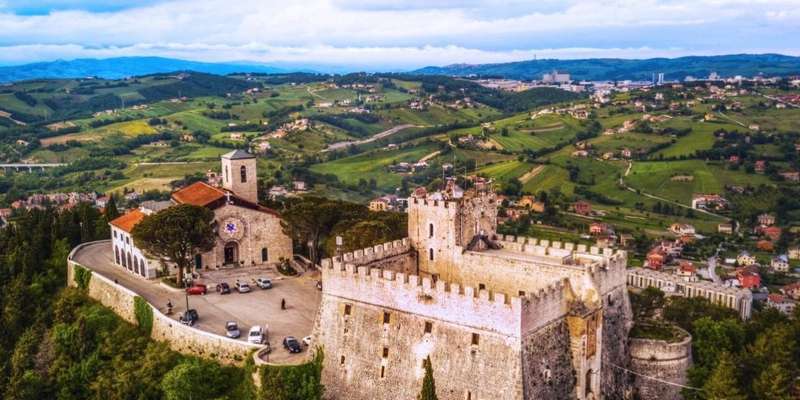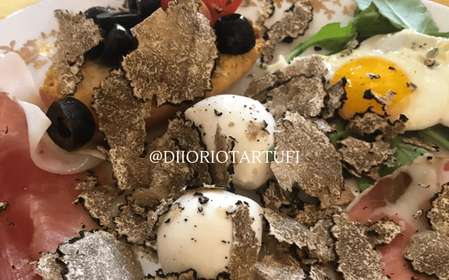- Home
- Useful Tips
- Traditional food experiences in...
Most travelers to Italy overlook Molise's culinary treasures, rushing past this quiet region for more famous destinations. Yet 83% of visitors who do stop describe Campobasso's food as their most authentic Italian dining experience. The challenge lies in finding truly traditional eateries – many family-run trattorias have no online presence, while flashy tourist spots serve watered-down versions of local specialties. This creates a frustrating paradox: you're surrounded by generations-old food culture but can't access it without insider knowledge. The stakes are higher than just one mediocre meal. Miss the real cavatelli pasta or ventricina salami, and you've missed understanding a 2,000-year-old pastoral tradition that defines central Italy's soul.


Decoding Campobasso's unmarked trattorias – what doorways lead to authentic meals?
The cobbled alleys of Campobasso hide culinary gems behind nondescript doors, with no English menus or flashy signs to guide you. Local wisdom dictates looking for three subtle clues: handwritten daily specials on notebook paper, the scent of wood-fired bread wafting through alleys before lunch, and groups of elderly men entering unassuming buildings at precisely 1pm. These osterias often occupy converted stables or medieval cellars, like Trattoria da Peppino near Piazza Municipio, where third-generation chefs still hand-roll pasta on marble slabs. Don't expect elaborate descriptions – servers might simply say 'today we have lamb' before bringing a life-changing pampanella (slow-roasted pork with peperoncino). The magic lies in this simplicity; when nonnas in the kitchen outnumber waitstaff, you've found the real deal.
Timing your food pilgrimage – when festivals and farms open their kitchens
Molise's agricultural calendar dictates its most extraordinary eating opportunities. Arrive in September for the Sagra della Crespella in Jelsi, where grandmothers demonstrate how they transform local wheat into paper-thin pancakes topped with wild mushrooms. Spring brings pecorino cheese tastings at family farms like Azienda Agricola Di Nucci, where you can watch sheep grazing on the same hillsides that flavor their milk. Even winter offers unique comforts – December through February sees roadside kiosks serving hot roasted chestnuts with local mistrà liqueur. These seasonal moments require no bookings or tickets, just an understanding of the region's rhythms. For early risers, the 5am bread auction at Panificio Fratelli Cocco reveals how villagers have secured their daily loaves since 1923, complete with samples of wood-oven focaccia still warm from baking.
From shepherd's lunch to your plate – DIY food experiences that cost nothing
The true essence of Molise cuisine reveals itself through self-guided adventures. Start at Campobasso's morning market near Corso Bucci, where farmers sell ingredients directly from their lands – taste test three types of extra virgin olive oil before choosing one. Then picnic at Monforte Castle ruins with a bag of Pallotte cheese balls and crusty bread from Panificio Moderno. Follow the 'Strada della Ventricina' trail to meet salami artisans in Montenero di Bisaccia, where aging cellars smell of oak and paprika. These encounters cost little but require two things tourists often lack: patience to communicate without shared language, and willingness to accept unexpected invitations. It's not uncommon for cheesemakers to offer espresso or for olive growers to share their family's lunch table once they recognize genuine interest in their traditions.
Beyond restaurants – how cooking classes unlock Molise's culinary soul
When dining out isn't enough, several local families offer immersive cooking experiences that reveal Campobasso's edible heritage. At Agriturismo Fattoria Colle delle Api, you'll forage wild herbs before learning to make maccheroni alla chitarra using the traditional 'guitar' string tool. These sessions often end with meals enjoyed in century-old farmhouses, where recipes double as oral history lessons. For deeper exploration, multi-day workshops incorporate visits to wheat mills and vineyards, connecting each ingredient to Molise's landscape. While pricier than restaurant meals, these experiences provide something money can't buy elsewhere – the tactile memory of shaping pasta dough alongside someone whose hands have done it daily for sixty years, ensuring these nearly-lost techniques live on through visitors' newfound skills.
